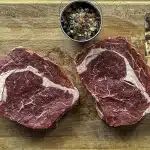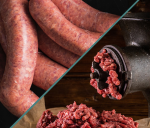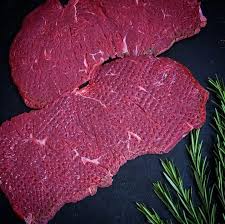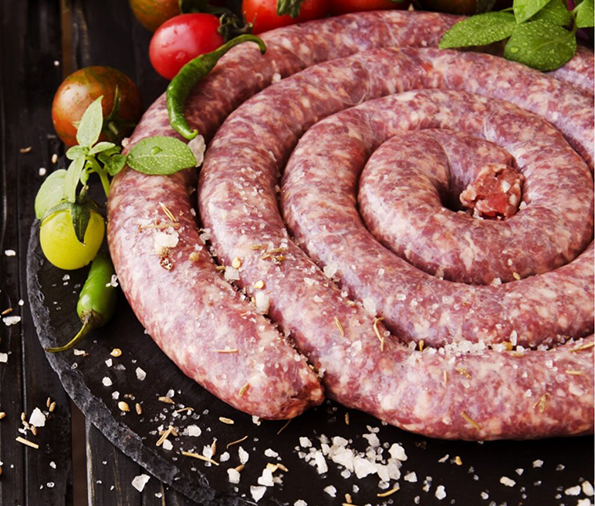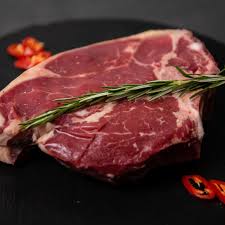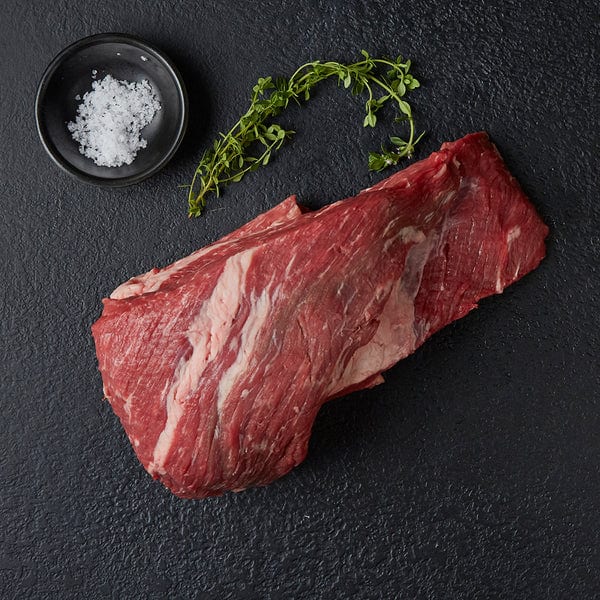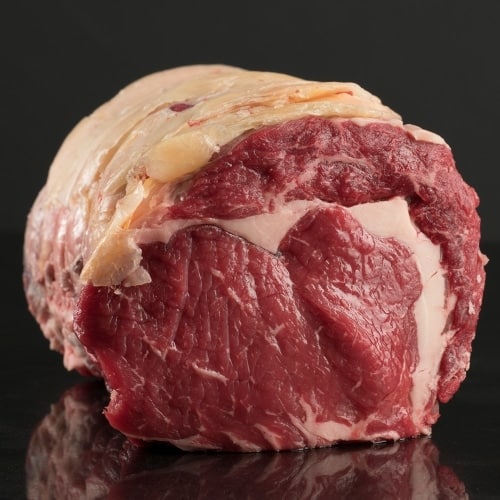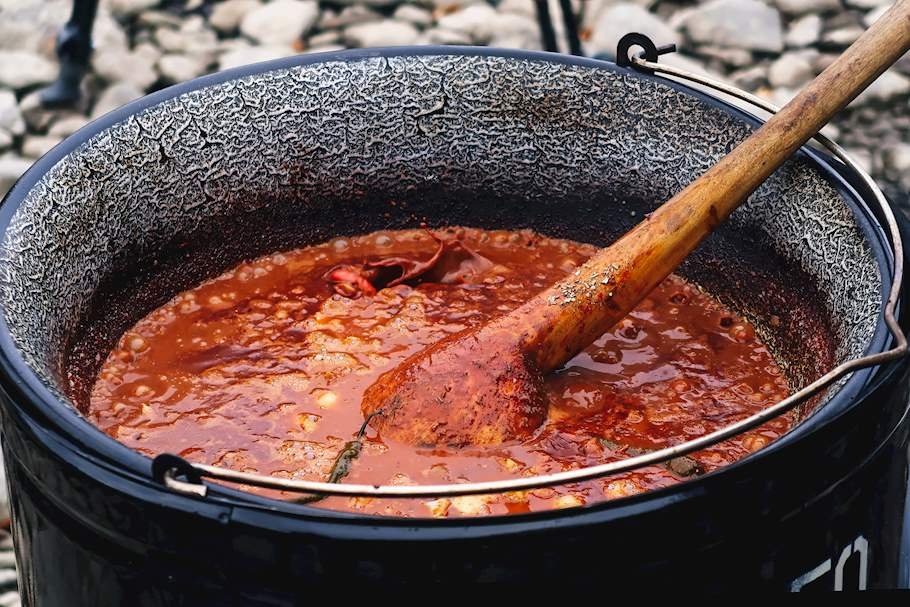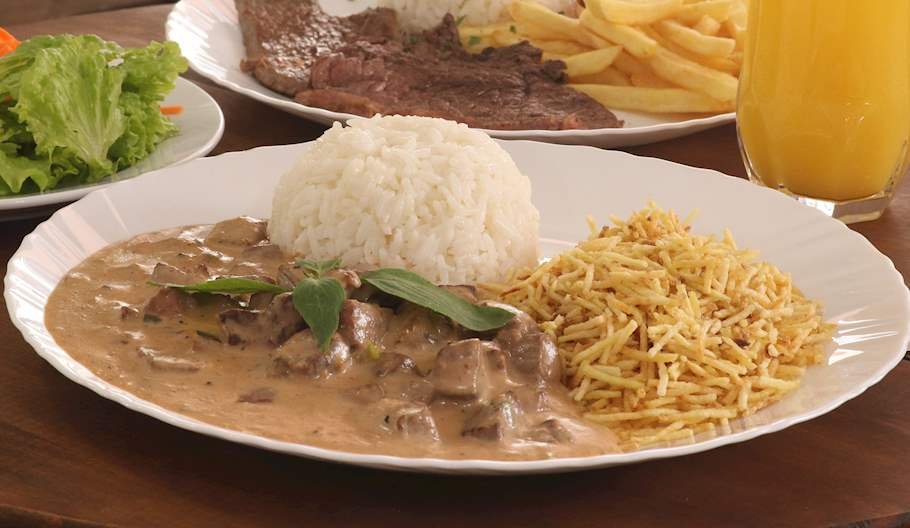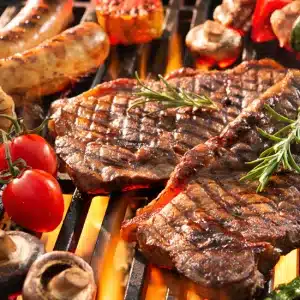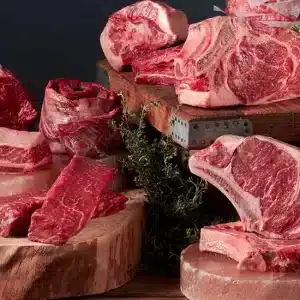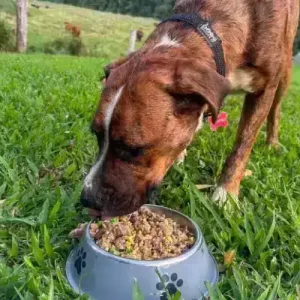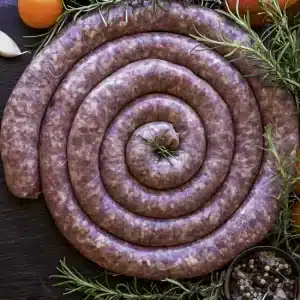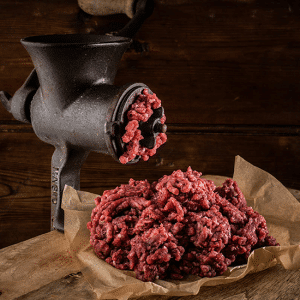Finer Cuts Box
$165.00
Whats included in your box*
Loaded with the best of the best when it comes to steaks. Grass-fed, grass-finished Rump, Ribeye, Porterhouse and chunky eye-fillet, and BBQ steaks. It will knock your socks off.
Our choice of cuts may sometime vary due to availability and we may substitute a particular cut for another. We will always try to select a cut of the same quality.
Selection of Premium Grass-Fed Steaks 4.5kg
We don’t mess around with this box!
- 4 Eye Fillets Steaks
- 4 Ribeye Steaks
- 2 Rump Steaks
- 4 Sirloin Steaks
- 3 Large BBQ Steaks
- 2 Oyster Blade or Skirt Steaks
Our Cuts Explained
The texture of beef ribs can vary based on the cooking method, making them versatile in the kitchen. When roasted, they become exceptionally tender and succulent, absorbing the flavours of aromatic vegetables, herbs, and spices. A classic beef ribs dish typically involves searing the meat to achieve a golden crust, followed by slow simmering in a mixture of red wine, beef broth, garlic, and onions for several hours, until the meat falls off the bone easily.
For those who enjoy a more robust and smoky flavour, beef ribs can be grilled or smoked. When grilled, the exterior caramelises beautifully, forming a delicious crust while the inside remains juicy and flavorful. This method enhances the natural beefiness of the meat, creating a satisfying contrast in textures.
Beef ribs are celebrated in various culinary traditions, from Korean galbi, where they are marinated in a sweet and savoury sauce, to classic barbecue, where they are rubbed with spices and cooked low and slow. Their rich, hearty flavour pairs wonderfully with sides like creamy mashed potatoes, roasted vegetables, or a fresh, tangy salad, making them a favourite for both casual meals and special occasions.
What truly sets the Bolar Blade Roast apart is its composition, filled with collagen and connective tissues that benefit immensely from slow cooking methods. When subjected to low and slow heat—whether braising, roasting, or simmering in a flavorful broth—these tissues break down, transforming the roast into a succulent piece of meat that can be easily pulled apart with a fork.
In preparation, we recommend searing the outside of the roast to create a beautifully caramelised crust, which builds layers of flavour that enhance the overall dish. Seasoning can involve a simple blend of salt, pepper, and herbs such as rosemary or thyme, which complement the natural beefy notes. Alternatively, marinades can introduce a zesty kick or a hint of sweetness, further diversifying the flavour profile.
Perfect for family meals or entertaining, the Bolar Blade Roast serves as a hearty centrepiece for gatherings. Pair it with seasonal vegetables and a rich gravy or serve it as part of a cozy stew, allowing the savoury sauce to envelop.
Overall, the Bolar Blade Roast is a versatile and satisfying choice, renowned for its rich flavours and comfort-food qualities, making it a staple in many kitchen roasts.
The chuck rolled rib roast is typically rolled and tied, which helps it cook evenly. It can be well-seasoned, often with herbs and spices, and is usually seared before roasting to enhance its flavour.
This cut is best when slow-cooked using methods like roasting or braising. The marbling allows it to stay moist and tender during cooking. The ideal cooking temperature is usually medium-rare to medium, to prevent it from becoming tough.
This roast can be served in slices and pairs well with sides such as mashed potatoes, roasted vegetables, or a fresh salad. It is often accompanied by gravy or a red wine reduction.
The chuck rolled rib roast is known for its rich, beefy flavour, enhanced by the marbling throughout the cut. It’s a popular choice for family dinners and special occasions due to its delectable taste and impressive presentation.
Overall, the Chuck Rolled Rib Roast is an excellent option for anyone looking to prepare a delicious and satisfying meal, combining bold flavours with tender texture.
It is known for its rich flavour and tender texture, resulting from the curing process it undergoes. The name “corned” comes from the large grains of salt, historically referred to as “corns” of salt, used in the curing process.
Our Flavour process imparts a savoury, salty flavour, often complemented by spices like coriander, black pepper, and mustard seeds. It is a popular choice for traditional dishes.
When cooked properly, corned silverside is juicy and tender, making it easy to slice. We recommend a slow cooking method, which breaks down the connective tissues, resulting in a melt-in-your-mouth texture.
Often used in classic dishes such as corned beef and cabbage, it is boiled or braised and can be served with vegetables. It can also be sliced thin and used in sandwiches, such as the beloved Reuben sandwich, or incorporated into salads and hash.
Overall, corned silverside is a flavorful and versatile meat that is enjoyed in various cuisines.
Its ability to cook evenly and absorb delicious flavours from marinades and sauces makes diced beef ideal for stews, casseroles, and stir-fries. The consistent size not only ensures quick cooking but also helps maintain tenderness—especially when simmered over a more extended period.
When it comes to preparing diced beef, the cooking method is crucial for achieving the optimal texture. Robust cuts shine with the slow cooking technique, allowing flavours to truly flourish. On the other hand, tender pieces benefit from quick, high-heat cooking to preserve their juicy goodness.
Our finer cuts box features our hand selected premium steaks. Loaded with 2 ribeyes, 1 large rump, 2 sirloins, 2 thick eye-fillets and some generous BBQ steaks, perfect for that afternoon BBQ.
Protein:
Grass-fed beef is an excellent source of complete protein, which is essential for muscle repair and growth.
Vitamins:
It is rich in B vitamins, particularly vitamin B12, which is crucial for energy production and brain function. Additionally, it contains higher amounts of vitamin E, known for its antioxidant properties.
Minerals:
Grass-fed beef contains significant levels of zinc, essential for immune function and wound healing, as well as iron, which is necessary for oxygen transport in the blood.
Healthy Fats:
This type of beef has higher levels of omega-3 fatty acids, recognised for their anti-inflammatory properties, along with conjugated linoleic acid (CLA), a fatty acid linked to various potential health benefits.
Antioxidants:
Grass-fed beef boasts a higher antioxidant content due to the cattle’s pasture-based diet, with carotenoids contributing to the fat’s yellowish hue.
Omega-6s:
Grass-fed beef has a more balanced fatty acid profile, with greater amounts of beneficial omega-3s compared to grain-fed beef.
Conjugated Linoleic Acid (CLA):
This beneficial fatty acid is found in higher concentrations in grass-fed beef.
Our animals are processed at Rocky Creek Abattoir at Tolga in the heart of the Tablelands.
We finish processing in a newly established on-farm butcher shop, to ensure that each cut prepared to the highest standards of quality. The meat is vacuum-packed and immediately frozen, making it readily available for collection or delivery.
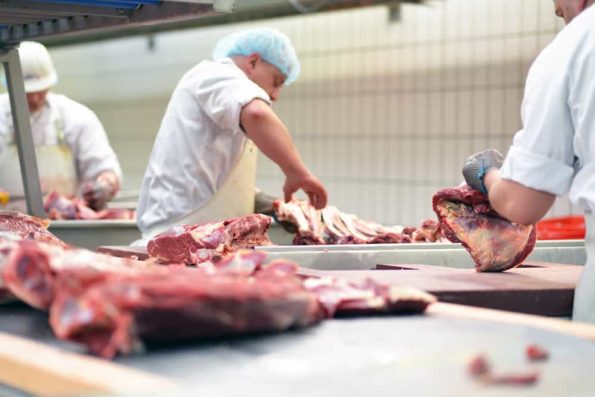
Once defrosted in the refrigerator, minced meat should be cooked within 1 to 2 days, while larger cuts can be stored for 3 to 5 days. Always keep defrosted meat in the fridge at or below 4 °C to prevent bacterial growth. If meat is defrosted in the microwave or cold water, it should be cooked immediately.
Meat can be safely frozen indefinitely if stored at -18 °C or below. However, the quality, including taste and texture, may diminish over time. Recommended freezing times vary by meat type. For instance, roasts and steaks can maintain good quality for up to 12 months, while minced meat is best used within 3 to 4 months.
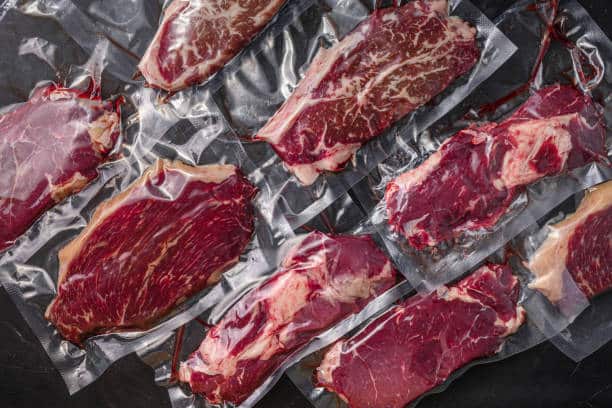
We store our meat at -18 °C in our dedicated freezers and commercial freezer room in our on-farm butcher shop. We transport our products in either a refrigerated freezer trailer or a refrigerated freezer ute, ensuring they arrive to you frozen. The only thing you need to do is be home when we deliver.
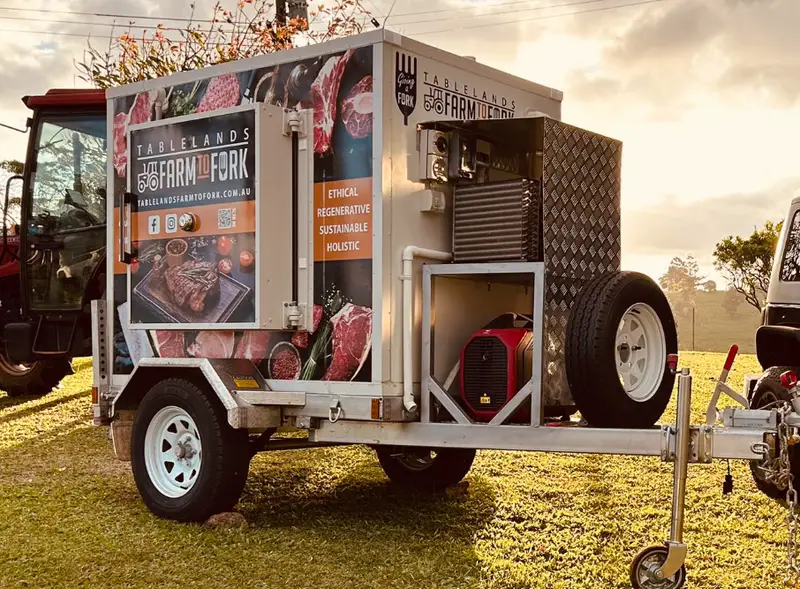
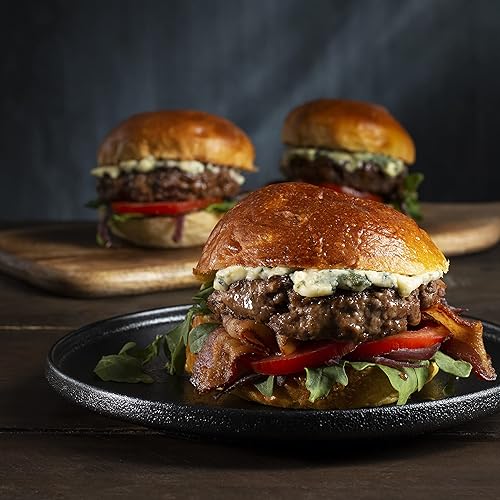
Australian Beef is the go-to source for beef enthusiasts. Our team has compiled a variety of delicious and healthy recipes to inspire your next meal. Explore our beef recipes designed for real life—featuring freezer-friendly meals, one-pan dishes, and comforting classics that deliver big flavor with minimal effort.
Our tips and advice



We value you feedback!
Alison S.
Jay W.
Ben J.
Discover our recipes
How we farm
Questions
Tell me more about your breeds?
We primarily raise Angus cattle crossed with Charolais. The Angus breed is renowned for its marbling and the quality of its steaks, while the Charolais breed is one of the best for grass-fed and grass-finished operations. We also work with other breeds, including Brangus and Charbray.
Do you use vaccines or hormones?
We are committed to raising our cattle without the use of hormones, Bovaer, or vaccines, ensuring that we provide you with the highest quality, natural meat.
What type of pasture do you have?
As regenerative farmers, we are value sustainable practices that promote healthy ecosystems. Our diverse, multi-species pastures include brachiaria, fescue, and rhodes grasses, which work together to enhance the vitality of our land. Additionally, by incorporating legumes and clover into our paddocks, we significantly improve soil health, sequestering nitrogen and carbon. This not only enriches our soil but also contributes to a greener, more resilient farming future.
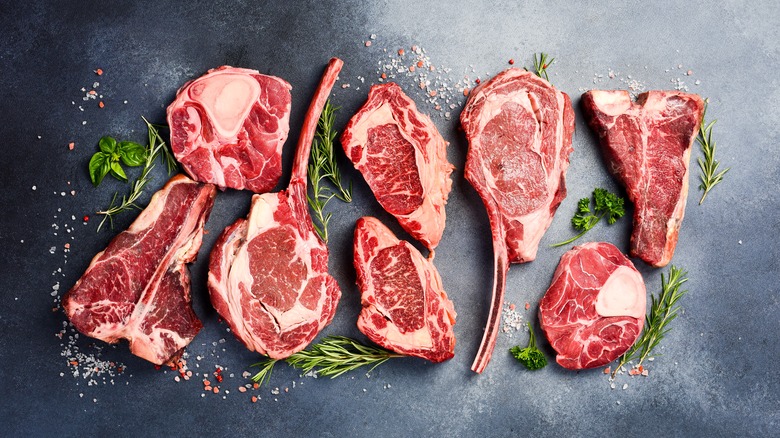
Related Products
This product is available for market collections or can be added to an existing box delivery.
Our recipe is perfectly balanced and packed with goodness—without fillers, preservatives, or unpronounceable ingredients. Why? Because we care about your dogs’ health.

